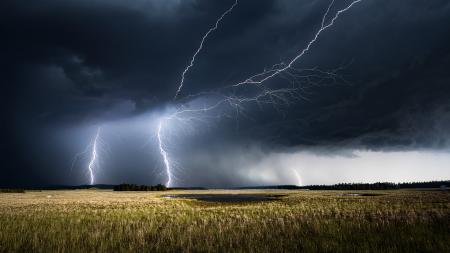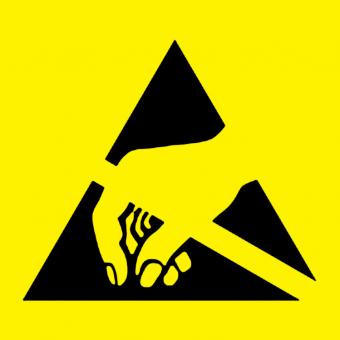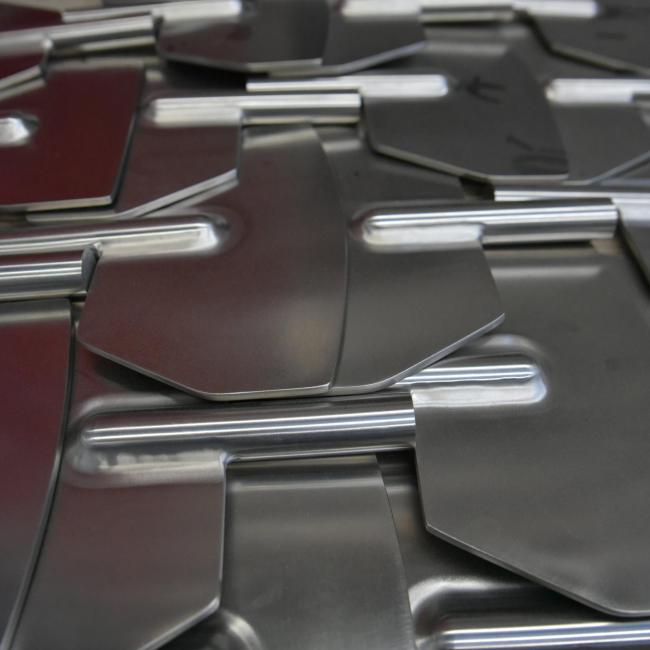This article discusses the Dutch Norm Explosive atmospheres (Part 36): non-electrical equipment for use in explosive atmospheres. Attention is paid to the basic methods and requirements, such as:
- The Ignition Hazard Assessment report and Dust Explosion Analysis
- The influence of hot surface on inflammation
- Sparks as a source of ignition
- Static electricity discharges
- Rules for marking equipment
The experts at Dinnissen Process Technology are available to answer all your questions:
Get in touch with Juul Jenneskens 077 467 3555
The Ignition Hazard Assessment report and Dust Explosion Analysis
When talking about explosive atmospheres, the distinction between potential and effective ignition source is very important. A potential ignition source is a source in the equipment that has the ability to ignite an explosive atmosphere. An effective ignition source, on the other hand, is an ignition source that is actually capable of igniting an explosive atmosphere. Therefore, when assessing ignition hazards, it should be considered that the sources listed below can be both potential and effective sources of ignition:
- Warm surfaces,
- Flames and hot gases,
- Mechanically generated sparks,
- Electrical sources,
- Leakage currents,
- Static electricity,
- Lightning,
- Electromagnetic waves from 104 Hz to 3 x 10 12 Hz from radio frequency radiation,
- Electromagnetic waves including optical radiation from 3 x 1011 Hz to 3 x 1015 Hz,
- Ionising radiation,
- Ultrasound,
- Adiabatic compression and shock waves,
- Exothermic reactions, including spontaneous combustion of shock waves.
Dinnissen analyzes and tests all these components in a so-called Dust Explosion Analysis (DEA). In general terms, such an ignition hazard study and assessment is often referred to as the Ignition Hazard Assessment. It identifies all potential ignition sources that could occur during normal use, an expected failure and a rare failure. A rare fault is understood to mean a fault between two independent expected faults that only cause an ignition source in combination, not separately from each other. Depending on the outcome of the DEA, the equipment is classified under one of the following Equipment Protection Level (EPL):
Group I: Equipment for mines susceptible to mine gas contains 2 EPLs: Ma and Mb.
Group II: Equipment for locations with an explosive atmosphere caused by mixtures of air with gas, vapors or mist. This group contains 3 EPLs: Ga, Gb, Gc. In addition, this group is further subdivided based on the nature of the explosive gas atmosphere into: IIA (propane), IIB (ethylene), IIC (hydrogen).
Group III: Equipment for locations with an explosive atmosphere caused by mixtures of air with another combustible substance. This includes 3 EPLs: Da, Db and Dc. This group is also subdivided based on the nature of the explosive dust atmosphere into: IIIA (suitable for flammable dust particles), IIIB (suitable for flammable dust particles and a non-conductive dust), IIIC (suitable for flammable dust particles, a non-conductive dust conductive and conductive fabric).
Equipment that passes the Ignition Hazard Assessment and which has been confirmed to not generate effective ignition sources under normal use may be classified as EPL Gc or Dc. If the investigation shows that the equipment does not contain effective ignition sources under normal use and even under anticipated failures, then it falls under the EPL Mb, Gb or Db category. If it appears that in addition to normal operation and expected failures, there is also no potential for effective ignition sources during rare failures, then the equipment falls under EPL Ga or Da. Depending on the equipment's EPL, mitigation can be applied to any of the potential ignition sources to further reduce the likelihood of them becoming effective ignition sources.
The Ignition Hazard Assessment report or DEA contains at least the following points:
- Basic information such as a description of the equipment and materials,
- Identified hazards and their causes,
- Investigation of the ignition hazard,
- Means for removing or minimizing ignition hazards,
- Result of the definitive ignition hazard assessment and any reasons for this,
- Other hazards requiring action,
- the EPL as a result and the necessary restrictions when it comes to safety.
The installations and machines that Dinnissen produces are mainly located in groups II and III. 90% of the products that are processed in Dinnissen's machines fall under category IIIB. From now on, therefore, only the conditions of groups II and III will be discussed.

Lightning as an ignition source
The influence of hot surfaces on inflammation
When assessing possible ignition problems, particular attention is also paid to hot surfaces. These can cause ignition if they come into contact with an explosive atmosphere. Even a layer of dust or a flammable solid that comes into contact with a hot surface and ignites on its own can be a source of ignition. The maximum surface temperature of each part individually determines whether it becomes an ignition source or not. When dealing with hot surfaces, group II equipment should:
- Classified in a temperature class that depends on the maximum surface temperature, this is shown in the table below. The maximum surface temperature must not exceed the limits as indicated in the table below.
- Defined by the maximum surface temperature.
- When necessary, only to be used in the specific explosive gas atmosphere for which it is intended. The maximum surface temperature may not exceed the auto-ignition temperature of the explosive gas atmosphere.
| Temperature class | Maximum surface temperature ℃ |
| T1 | ≥ 450 |
| T2 | ≥ 300 |
| T3 | ≥ 200 |
| T4 | ≥ 135 |
| T5 | ≥ 100 |
| T6 | ≥ 85 |
| Type of gas | Ignition temperature ℃ | Temperature class |
| Natural gas | 670 | T1 |
| Methane | 595 | T1 |
| Carbon sulfur | 90 | T6 |
| Gasoline | 220 | T3 |
When a gas mixture or dust cloud comes into contact with an object greater than or equal to the ignition temperature of this combustible gas or dust, ignition can take place.
The table above shows some examples of gases with their ignition temperature. This ignition temperature determines the temperature class.
If we consider the conditions for group III regarding hot surfaces, the following applies:
- If there is no dust layer, the determined maximum surface temperature must not exceed the assigned maximum surface temperature.
- When dust layers do have to be taken into account, the maximum surface temperature can also be determined for a given layer thickness (TL) of dust around all sides of the equipment.
- The indicated maximum surface temperature on the equipment must be the actual maximum surface temperature.
Under certain conditions, static electricity discharges can occur and are fire hazards
Sparks as a source of ignition
Sparks can also be a source of ignition. They arise as a result of friction, impact or wear processes in which small particles separate from the solid material and also become hot due to the energy used in the process. These sparks can ignite flammable gases, vapors and certain dust / air mixtures. They can also cause a layer of dust to smolder when they land on it, which can also be a source of ignition for an explosive atmosphere. However, single collisions between metal parts that can generate sparks are not to be considered as potential ignition sources provided one of the following combinations of conditions is met:
1. When the impact speed is less than 1 m / s and the maximum potential impact energy is less than 500 J plus
- Aluminum, titanium and magnesium in combination with ferritic steel is not used or,
- Aluminum in combination with stainless steel or aluminum is only used if the stainless steel cannot corrode and no iron oxide or rusty particles can remain on the surface or,
- Hard steel in combination with hard steel is not used or,
- Hard steel is not used where it can affect granite.
Or
2. When a combination of non-sparking metals is used and the impact velocity is less than or equal to 15 m / s and the maximum potential energy is less than 60 J for gas / vapor atmospheres or less than 125 J for dust atmospheres.
Sparks caused by impact from colliding objects need not therefore be considered effective ignition sources when the impact velocity is less than 15 m / s and the maximum potential energy is less than the values in the tables below. These tables provide guidance in choosing whether the potential ignition source can become an effective ignition source or not. If an impact has a lower energy consumption than in the tables, then there is no effective ignition source. On the other hand, if the energy exceeds the values in the tables, this does not mean that the ignition source immediately becomes an effective source. The Ignition Hazard Assessment must show that the chance of an impact is low enough and cannot constitute a hazard.
Energy limits for single impact - for EPL Ga
| Group | non-sparking metals | other materials |
| ICC | 60 J | 5 J (hydrogen) 3 J (hydrocarbons including acetylene)) |
| IIB | 125 J | 10 J |
| IIA | 125 J | 20 J |
Energy limits for single impact - for EPL Gb
| Groep | non-sparking metals | other materials |
| ICC | 125 J | 10 J |
| IIB | 250 J | 20 J |
| IIA | 500 J | 40 J |
Energy limits for single impact - for EPL Gc
| Groep | non-sparking metals | other materials |
| ICC | 250 J | 20 J |
| IIB | 500 J | 40 J |
| IIA | 500 J | 80 J |
Energy limits for single impact - for EPL Da, Db and Dc
| EPL | non-sparking metals | other materials |
| Da | 125 J | 20 J |
| Db en Dc | 500 J | 80 J |
However, there are some caveats to be made about these tables. Namely, the criteria from Tables 3, 4 and 5 do not apply to atmospheres with flammable gases such as carbon disulfide, carbon monoxide and ethylene oxide. In addition, for Table 6, these values do not apply to explosive pyrotechnic or self-decomposing substances that do not fall within the scope of this relevant standard.
Metals that do not generate sparks are copper, zinc, tin, lead, bronze and some brass. These are examples of non-ferrous metals with a high thermal conductivity and which are difficult to oxidize. Only when used in combination with materials of extremely high hardness can they create sparks.

Discharge of static electricity

Suitable material selection such as stainless steel
Static electricity discharges
Under certain conditions, static electricity discharges can occur and are fire hazards. The discharge of charged and insulated conductive parts can easily lead to flammable sparks. In addition, charged parts made of non-conductive material, such as many plastics, can cause brush discharges. In some cases, these brush charges can also spread, such as during fast separation processes or with a combination of conductive and non-conductive materials. These scattering brush discharges arise from the efficient charging of non-conductive layers or other coatings on metal surfaces. They can be avoided by providing a breakdown voltage across the layers less than 4 kV or by excluding any other loading mechanism stronger than manual friction across surfaces.
Spot discharges and lightning-like discharges are not considered a source of ignition because point discharges are not a fire hazard for explosive atmospheres and lightning-like discharges have never been observed in charged clouds of a magnitude encountered in industrial operations. On the other hand, cone discharge from bulk material can occur and is also considered a source of ignition. Depending on the discharge energy, a bulk cone discharge can ignite an explosive atmosphere just like a brush and spark discharge. Chest discharges can ignite almost any explosive gas atmosphere, but not flammable substances (depending on their minimum ignition energy) when there are no flammable gases or vapors.
Different conditions apply to groups II and III with regard to static electricity. Group II equipment and components that can be electrostatically charged must be designed in such a way as to avoid ignition by electrostatic charging during use, maintenance and cleaning. This can be achieved by:
- Appropriate choice of materials.
- Size, shape and design such that dangerous electrostatic charges cannot occur.
- Limitation of the surface. This applies to any part of the equipment that contains non-conductive parts that can be charged electrostatically. Provided that brush discharges cannot spread.
- The non-conductive material in equipment is covered with a grounded metal or other conductive surface.
- If the ignition hazard from electrical discharge cannot be avoided by the design of the equipment, the marking must include the X symbol and a warning label.
In Group III equipment, brush ignitions cannot ignite an explosive dust atmosphere. For that reason, there are no rules for surface thickness or coatings necessary to prevent scattering brush discharges.

Dinnissen machine plate
Rules for marking equipment.
When the Iginition Hazard Assessment or DEA has been completed, the equipment is labeled with the following information:
- The name of the manufacturer or registered trademark,
- Manufacturer identification type,
- Symbol Ex,
- Letter "h",
- Where needed, the equipment group symbol I, II or II including additional subdivisions (IIA, IIB, etc.). When the equipment is specially designed for use in a particular gas, the chemical formula or name of the gas must be in parentheses on the label,
- For group II equipment there is a symbol that indicates the temperature class and / or the maximum surface temperature in degrees Celsius,
- For group II equipment, the maximum surface temperature is stated in degrees Celsius, preceded by the letter T (T90 ℃),
- Where necessary the EPL categories: Ma, Mb, Ga, Gb, Gc, Da, Db, or Dc,
- Where necessary, an ambient temperature mark,
- A serial number,
- Name of the issuer of the certificate,
- If specific terms of use apply, the X symbol.
- Send feedback
- History
- Saved
- Community

Name: Juul Jenneskens
Advisor
Please feel free to contact me if you have any questions about this subject. My team of colleagues and I are ready to answer!
Get in touch with Juul Jenneskens 077 467 3555 [email protected]
Do you prefer to request a consultation directly?
